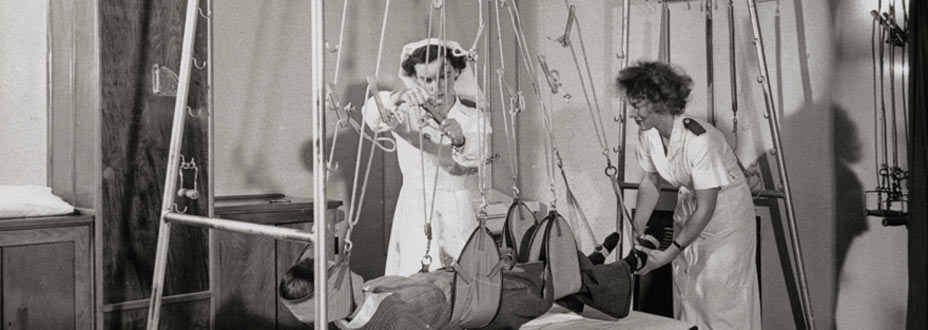
Physio celebrates 100 years
When the School of Physiotherapy marks its centenary in 2013 it will be a celebration of 100 years of history that has seen the school go full circle – from being part of the University, then coming under the wing of the local hospital board, before becoming part of Otago Polytechnic.
In the 1990s the circle was completed as the School again became a valued research-intensive part of the University of Otago.
The early days
At the time the School of Massage was established at the University of Otago in 1913 it was a natural fit with the University's existing Health Sciences Schools of Medicine and Dentistry. From the beginning, students came under a strong anatomy-based teaching model advocated by the Australasian Massage Association whose desire to have dissection as part of the learning process meant Otago was really the only option.
Masseurs were already an accepted part of medicine and, by the 1890s, they had a presence in all the main hospitals. Some doctors recognised the value of massage and electrical treatment, and wanted properly trained people.
The early years proved difficult, with staff leaving to serve in World War 1 and the Medical School was also under pressure. As a result, in 1915 the University handed the School to the Hospital Board where it remained for the next 60 years, although the Medical School continued to provide teaching in anatomy and physiology. Only eight students had enrolled in 1913, but by 1918–19 the intake to the School peaked at 20.
The School's existence remained tenuous up until the end of World War 1 and the arrival of James Renfrew-White, the first of a string of strong personalities who influenced and endorsed the future of physiotherapy. A Dunedinite, he worked with the British military and had trained in Britain where orthopaedic surgery was making major advances dealing with the many horrific war injuries. In keeping with a trend emanating from Europe, Renfrew-White saw there was a clear recognition of the need for various forms of physical rehabilitation.
Mary-Louise ("Louie") Roberts was appointed as the School's Sister in Charge in 1925 and retired only once the much-heralded Hanover Street building and physiotherapy pool was opened in 1946. Although the term physiotherapist had come into vogue in the 1920s, it wasn't until around the time of the opening of the new building that the School of Massage became known as the New Zealand School of Physiotherapy.
The Hanover Street complex and its facilities were widely praised by visiting physiotherapists and orthopaedic surgeons alike with their state-of-the-art hydrotherapy, electrotherapy and gymnasium facilities which served to provide a quality education experience over the next 40 years.
Vice-principal Enid Gotts, who had arrived from Britain in the early 1930s, subsequently became head of the School until late 1964. Something of a character, she mainly taught electrotherapy and even sat exams to become an electrician so she could fix the machines.
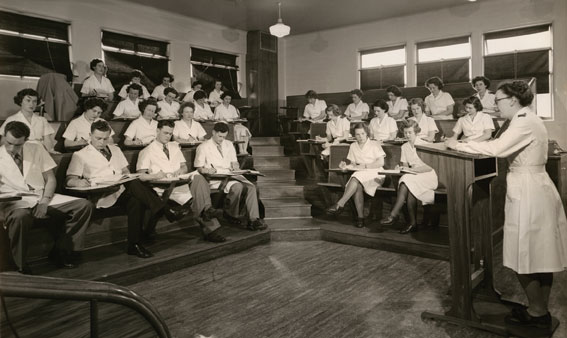
The 1940s and post-war '50s were a time of growth and by the early '60s the School was taking up to 70 students each year.
It was at this time that vice-principal Billy McLeod, a School alumnus, took over and eventually oversaw the move from hospital to education institution-based training that placed the School under the Otago Polytechnic umbrella in 1976. This was part of a wider move to take the education of health staff away from hospitals, a move that also saw nursing training taken into the polytechnic system.
The School was based at the Forth Street Otago Polytechnic campus from 1988–96. A conjoint physiotherapy degree was established in 1991 as a prelude to the School moving back under the University's wing in 1996, taking history full circle.
The changing nature of practice and training
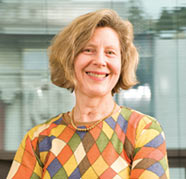
Dr Margot Skinner:
"The biggest change has been the move from a conditions-based methodology to using the knowledge base and what we call clinical reasoning."
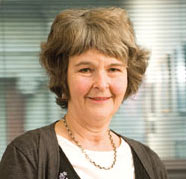
Dr Gill Johnson:
"We've now got a much broader range of roles within the health-care system."
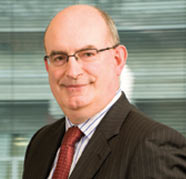
Professor David Baxter:
"We have a nexus here based upon the synergy of practice, research and teaching – a lot of schools don't have that."
Being both long-serving staff members and alumni of the School, means deputy dean Dr Margot Skinner and senior lecturer Dr Gill Johnson have seen a marked change in the way physiotherapy is practised and, therefore, taught.
"The biggest change has been the move from a conditions-based methodology to using the knowledge base and what we call clinical reasoning," explains Skinner. "This means understanding the research and knowing the evidence, making the assessment and then applying the best evidence to ensure the patient is managed in the optimal way.
"The whole emphasis these days is for treatment to be patient-centred and to empower the patient to actually take control of their own condition and educate them to have a strong participatory role in managing their own condition."
Johnson says another major change has been a broadening of the profession's scope to include areas such as occupational health.
"Sports medicine has also become a specialist area of practice, as well as mainstream musculoskeletal and orthopaedic and neurology and respiratory threads within our curriculum.
"We've always had an important role in women's health, though the emphasis has changed dramatically. We've now got a much broader range of roles within the health-care system."
Promoting physical activity in older adults also presents a shift, with a strong push towards exercise and physical activity, and promoting well-being.
Johnson says more advanced surgical techniques and better pharmacology mean patients tend not to spend prolonged periods of bedrest in hospital after sustaining a fracture.
"Nowadays they get up within two days with pins through the fracture and are then discharged. Although patients still need rehabilitation, it is different because they are generally much more mobile and do not suffer from the many problems associated with prolonged bedrest."
Skinner noted non-communicable diseases associated with lifestyle, such as obesity, diabetes and cardiovascular disease, have become more prevalent.
"Physiotherapists will continue to have a really strong role in managing people who have those conditions but, importantly, also in preventive education and management.
We have to teach the curriculum in a way that will enable the students to be able to be effective in managing such diseases into the future, not just the present," she says.
"One of the current things which I think is going to evolve for the next generation is what we call interprofessional education, where various professions learn to work together and understand each other's contribution a lot better. That means more positive outcomes for the patient in the long run.
Into the next 100
Even before Professor David Baxter came to Dunedin in 2005 to take over as Dean, he was well-acquainted with the reputation of the Otago School of Physiotherapy. He says the School has well-recognised mana and prestige, and New Zealand physiotherapy is very well respected internationally.
"The biggest change for the School over the past 10 years, particularly around its move back into the University, has been its research development which is truly spectacular.
"In the very first PBRF exercise, the independent assessment of research quality, this School was rated a 0.3: by 2006 it had achieved a rating of 3.0.
"There are very few schools of physiotherapy (or physical therapy as it is known in the USA) within so-called research-intensive universities. We are very fortunate to be in such an institution – and one which has such a strong focus on research-informed teaching for its students."
Baxter says the School's clinics are another of its unique features. "We have a nexus here based upon the synergy of practice, research and teaching – a lot of schools don't have that."
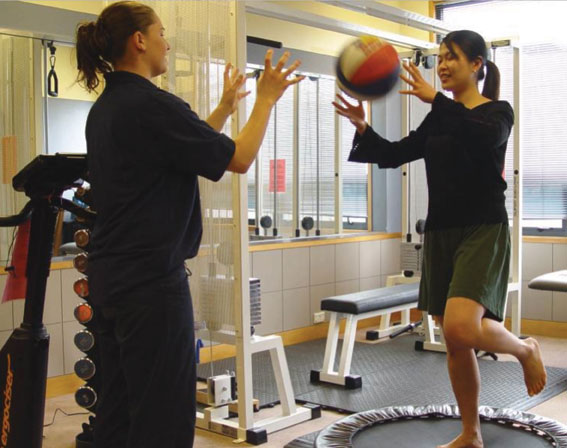
This emphasis on research-informed teaching and practice is important at a time where the role of the physiotherapist is expanding into new areas, and into practice specialisation for experienced practitioners.
For example, UK physiotherapists with postgraduate training have recently been granted limited prescribing rights and can also perform joint injections, rather than patients having to go to an orthopaedic surgeon. The registration board for New Zealand is also moving towards the recognition of specialist physiotherapists.
"Physiotherapists have, for some time, been autonomous practitioners: they don't need a doctor's referral, so they can assess, diagnose, prescribe treatment or refer on to other specialists," he says “Such specialisation would allow some physiotherapists to provide a higher level of care for those patients who require such management and – potentially – to realise efficiencies by taking over more specialised roles and responsibilities.
"That would also take some of the pressure off our busy doctors by having a designated specialist role for physiotherapists who can do a range of things, some of them delegated from physicians and other specialists."
Beyond this, an important new development for the School is the recent approval to start an honours year, which will begin in 2013, the School's centenary year. This will provide the most able students a clearer path on to postgraduate study and research in physiotherapy.
A review of postgraduate programmes is also underway, Baxter explains.
"There are two drivers to that. One is to make it more flexible for busy clinical professionals. And two, to align it more clearly with the national-level move to specialist practitioner, as part of which physiotherapists will need at least a master's degree to become a specialist."
The centenary celebrations
The School of Physiotherapy will mark its centenary with both alumni celebrations, and an International Scientific Conference “PhysioForward”, 3–6 April 2013. Celebrations will include tours and displays, as well as plenty of time for alumni to catch up with each other.
The Centennial Conference will be held 5–6 April and is planned as the key event to take the School into the next 100 years. It will feature leading international keynote speakers as well as local academics, and cover a wide range of research in key areas of health care.
For more information please go to http://physio.otago.ac.nz/centenary/default.html
Physio alumni make their mark
The Otago School of Physiotherapy alumni include many leaders of the profession –people who have risen to prominent roles, leading the profession in clinical practice, heading and even launching physiotherapy schools overseas, and taking prominent roles with leading sports team. They are too numerous to list, but Dr Jennifer Pryor and Peter Gallagher are two fine examples of the high achieving graduates of the School.
Dr Jennifer Pryor
It was supposed to be some OE employment, but little did Jennifer Pryor know that time as a junior physiotherapist at Brompton Hospital, London, in 1973 would open the door to many exciting professional opportunities.
Pryor graduated from the New Zealand School of Physiotherapy (Dunedin) in 1970 and was already drawn to cardiothoracic physiotherapy after a final-year clinical posting to Christchurch where she came under the tutelage of physiotherapist Bernice Thompson and cardiothoracic surgeon Heath Thompson. They had developed a technique using forced expiration and breathing control to clear mucus from the airways of medical and surgical patients.
After 18 months she returned to Christchurch, but maintained her links to what was to become Royal Brompton and Harefield Hospitals. A visit in the late 1970s produced clinical research, published in the British Medical Journal, showing that Thompson's technique was more effective than two other airway clearance regimens.
Pryor took a permanent post at Brompton in 1986, and pursued further research and academic work including a Health Executive MBA, then a PhD. Many more peer-reviewed publications followed, along with chapters in text books and the editorship of two prominent texts, well known to Otago physiotherapy students, Physiotherapy for Respiratory and Cardiac Problems and Respiratory Care. She has also found herself in demand speaking at national and international conferences, and teaching in many different countries.
"Looking back I don't think we, New Zealand physiotherapists, appreciated how leading edge we were, owing in no small way to our excellent relationship with the medical profession, and nor did we appreciate how excellent our training had been."
Peter Gallagher
All Blacks physiotherapist Peter Gallagher describes himself as one of the "last of the Mohicans", having been a member of the final year of the Otago Polytechnic-based Diploma of Physiotherapy in 1992.
In many ways he was able to enjoy the best of both worlds, going on to do a Master of Health Sciences at the University of Otago, graduating in 2005.
Like most physiotherapists, he started his working life in hospital physiotherapy before heading from his home town Dunedin to Christchurch where he soon began to do weekend work with SportsMed.
"I loved the hospital and loved hospital practice, but then going into the community and finding that there was a niche for me in sports rehabilitation, that was really what took me down the sport path."
His first rugby appointment with the Canterbury Rugby Academy then led to a role with the Highlanders and, eventually in 2005, the All Blacks role – time enough to be involved in two World Cups and a Lions' series. It is an incredibly busy role, but Gallagher has no doubt that the training he received has served him well and made him more disciplined.
"There were high expectations. You had to work hard and you were surrounded in a very competitive environment with other people who were very passionate about becoming physios and you had passionate people teaching you. So it was a very stimulating and demanding learning environment."
– MARK WRIGHT